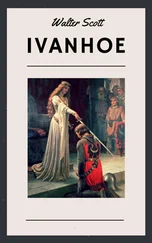line 102. Cp. the ‘wood-notes wild’ with which Milton credits Shakespeare, ‘L’Allegro,’ 131.
lines 104-5. The ideal pastoral life of the Golden Age.
line 132. ‘Sir William Forbes of Pitsligo, Baronet; unequalled, perhaps, in the degree of individual affection entertained for him by his friends, as well as in the general respect and esteem of Scotland at large. His “Life of Beattie,” whom he befriended and patronised in life, as well as celebrated after his decease, was not long published, before the benevolent and affectionate biographer was called to follow the subject of his narrative. This melancholy event very shortly succeeded the marriage of the friend, to whom this introduction is addressed, with one of Sir William’s daughters.’-SCOTT.
line 133. ‘The Minstrel’ is Beattie’s chief poem; it is one of the few poems in well-written Spenserian stanza.
line 147. Ps. lxviii. 5.
line 151. Prov. xxvii. 10.
line 155. For account of Sir W. Forbes, see his autobiographical ‘Memoirs of a Banking House’; Chambers’s ‘Eminent Scotsmen’; and ‘Dictionary of National Biography.’
line 163. Cp. Pope, ‘Essay on Man,’ IV. 380, and Boileau, ‘L’Art Poetique, ‘Chant I:-
‘Heureux qui, dans ses vers, sait d’une voix legere
Passer du grave au doux, du plaisant an severe.’
line 172. ‘Tirante el Blanco,’ a Spanish romance by Johann Martorell (1480), praised in ‘Don Quixote.’
line 174. ‘Camp was a favourite dog of the Poet’s, a bull terrier of extraordinary sagacity. He is introduced in Raeburn’s portrait of Sir Walter Scott, now at Dalkeith Palace.’-LOCKHART.
line 181. Cp. Tempest, v. i. 93.
line 191. ‘Colin Mackenzie, Esq., of Portmore. See “Border Minstrelsy,” iv. 351.’-LOCKHART. Mackenzie had been Scott’s friend from boyhood, and he received his copy of ‘Marmion’ at Lympstone, where he was, owing to feeble health, as mentioned in the text. He was a son-in-law of Sir William Forbes, and in acknowledging receipt of the poem he said, ‘I must thank you for the elegant and delicate allusion in which you express your friendship for myself-Forbes-and, above all, that sweet memorial of his late excellent father.’-’Life of Scott,’ ii. 152.
line 194. ‘Sir William Rae of St. Catherine’s, Bart., subsequently Lord Advocate of Scotland, was a distinguished member of the volunteer corps to which Sir Walter Scott belonged; and he, the Poet, Mr. Skene, Mr. Mackenzie, and a few other friends, had formed themselves into a little semi-military club, the meetings of which were held at their family supper tables in rotation.’-LOCKHART.
line 195. ‘The late Sir William Forbes of Pitsligo, Bart., son of the author of the “Life of Beattie.”‘-LOCKHART.
line 196. The Mimosa pudica, or sensitive plant. See Shelley’s poem on the subject:-
‘The Sensitive Plant was the earliest
Upgathered into the bosom of rest;
A sweet child weary of its delight,
The feeblest and yet the favourite,
Cradled within the embrace of night.’
line 200. Cp. ‘L’Allegro,’ 31, ‘Sport that wrinkled Care derides.’
line 206. See King Lear, iii. 4. 138, where Edgar, as Poor Tom, says that he has had ‘three suits to his back, six shirts to his body, horse to ride, and weapon to wear.’
line 31. ‘ Alias “Will o’ the Wisp.” This personage is a strolling demon or esprit follet , who, once upon a time, got admittance into a monastery as a scullion, and played the monks many pranks. He was also a sort of Robin Goodfellow, and Jack o’ Lanthern. It is in allusion to this mischievous demon that Milton’s clown speaks,-
“She was pinched, and pulled, she said,
And he by Friar’s lanthern led.”
‘“The History of Friar Rush” is of extreme rarity, and, for some time, even the existence of such a book was doubted, although it is expressly alluded to by Reginald Scot, in his “Discovery of Witchcraft.” I have perused a copy in the valuable library of my friend Mr. Heber; and I observe, from Mr. Beloe’s “Anecdotes of Literature,” that there is one in the excellent collection of the Marquis of Stafford.’-SCOTT.
It may be added, on the authority of Keightley, that Friar Rush ‘haunted houses, not fields, and was never the same with Jack-o’-the-Lanthorn.’ See note on Milton’s ‘L’Allegro,’ 104, in Clarendon Press edition, also Preface to Midsummer Night’s Dream in same series.
Stanza IV. line 69. Humbie and Saltoun are adjoining parishes in S. W. of Haddingtonshire. To this day there is a charm in the remote rural character of the district. There are, about Humble in particular, wooded glades that might well represent the remains of the scene witnessed by Marmion and his troopers. East and West Saltoun are two decayed villages, about five miles S. W. of the county town. Between them is Saltoun Hall, the seat of the Fletchers.
line 91. ‘William Caxton, the earliest English printer, was born in Kent, A. D. 1412, and died 1401. Wynken de Worde was his next successor in the production of those
“Rare volumes, dark with tarnished gold,”
which are now the delight of bibliomaniacs.’-LOCKHART.
Stanza VI. line 119. The four heraldic terms used are for the colours-red, silver, gold, and blue.
line 120, The King-at-arms was superintendent of the heralds.
Stanza VII. line 133. Sir David Lyndsay’s exposure of ecclesiastical abuses in his various satires, especially in his ‘Complaynts’ and his Dialog, ‘powerfully forwarded the movement that culminated in the Reformation. It would, however, be a mistake to consider him an avowed Protestant reformer. He was concerned about the existing wrongs both of Church and State, and thought of rectifying these without revolutionary measures.
line 135. The cap of the Lion King’ was of scarlet velvet turned up with ermine.’
lines 141-4. The double tressure was an ornamental tracing round the shield, at a fixed distance from the border. As to the fleur-de-lis (flower of the lily, emblem of France) Scott quotes Boethius and Buchanan as saying that it was ‘first assumed by Achaius, king of Scotland, contemporary of Charlemagne, and founder of, the celebrated League with France.’ Historical evidence, however, would seem to show that ‘the lion is first seen on the seal of Alexander II, and the tressure on that of Alexander III.’ This is the heraldic description of the arms of Scotland: ‘Or, a lion rampant gules, armed and langued azure, within a double tressure flory counterflory of fleur-de-lis of the second.’ The supporters are ‘two unicorns argent maned and unguled, or gorged with open crowns.’ The crest is ‘a lion sejant affronte gules crowned or,’ &c. The adoption of the thistle as the national Scottish emblem is wrapt in obscurity, although an early poet attributes it to a suggestion of Venus.
line 153. Scott mentions Chalmers’s edition of Lyndsay’s works, published in 1806. More recent and very satisfactory editions are those of Dr. David Laing, (1) a library edition in three volumes, and (2) a popular edition in two. Lyndsay was born about 1490 and died about 1555. The Mount was his estate, near Cupar-Fife. ‘I am uncertain,’ says Scott, ‘if I abuse poetic license, by introducing Sir David Lindesay in the character of Lion-Herald, sixteen years before he obtained that office. At any rate, I am not the first who has been guilty of that anachronism; for the author of “Flodden Field” despatches Dallamount , which can mean nobody but Sir David de la Mont, to France on the message of defiance from James IV to Henry VIII. It was often an office imposed on the Lion King-at-arms, to receive foreign ambassadors; and Lindesay himself did this honour to Sir Ralph Sadler, in 1539-40. Indeed, the oath of the Lion, in its first article, bears reference to his frequent employment upon royal messages and embassies. The office of heralds, in feudal times, being held of the utmost importance, the inauguration of the Kings-at-arms, who presided over their colleges, was proportionally solemn. In fact, it was the mimicry of a royal coronation, except that the unction was made with wine instead of oil. In Scotland, a namesake and kinsman of Sir David Lindesay, inaugurated in 1502, “was crowned by King James with the ancient crown of Scotland, which was used before the Scottish Kings assumed a close Crown;” and, on occasion of the same solemnity, dined at the King’s table, wearing the crown. It is probable that the coronation of his predecessor was not less solemn. So sacred was the herald’s office, that, in 1515, Lord Drummond was by Parliament declared guilty of treason, and his lands forfeited, because he had struck, with his fist, the Lion King-at-arms, when he reproved him for his follies. Nor was he restored, but at the Lion’s earnest solicitation.’
Читать дальше






